It seems we can’t find what you’re looking for. Perhaps searching can help.








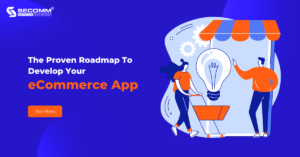
 27/04/2023
27/04/2023
 2,199
2,199
 2
2
 1
1
 1
1
Facing the boom of Mobile Commerce, businesses now have two choices: to build an eCommerce app to adapt to this boom or to ignore it and gradually fall behind.
According to Insider Intelligence’s forecast, mobile commerce market sales will reach $534.18 billion in 2024, of which two devices contributing to this incredible number are smartphones and tablets. Smartphones alone account for 87.2% of mobile commerce sales. These figures are the most convincing answer to the above consideration: Yes, businesses need to build an eCommerce app.
Building an eCommerce app requires a lot of effort and serious work because it is a complex process with many stages and the involvement of many relevant. Below are 8 summarized implementation steps that will help businesses understand the building process of a mobile shopping app to make their business operation more effective.
The first step of the process is to determine the objective of the mobile app, including deciding which products will be sold through the app and identifying the target audience. This way, businesses can build an app that meets their needs and quickly achieves the objective.
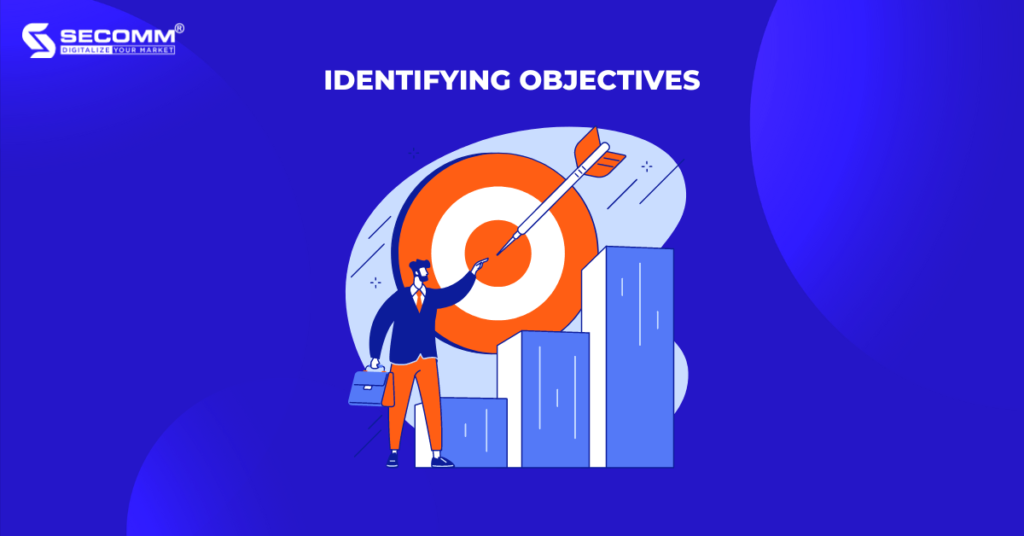
Businesses should do market research to understand their target audience’s needs, preferences, and behaviors in various ways, such as through surveys, interviews, etc. It helps them define the app’s features and the marketing strategies to promote it. Moreover, businesses should find the app’s unique selling points that differentiate it from its competitors, making it easy to attract potential customers and stand out.
After identifying the objectives, the business proceeds to the next step: identifying the vital features of the eCommerce app. Here are some recommendations:
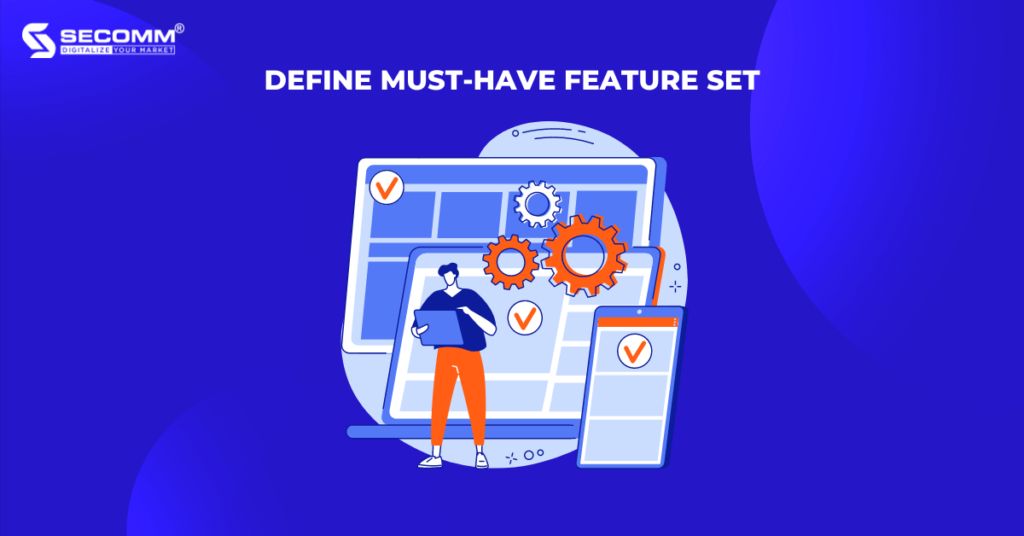
The selection of a platform for building an eCommerce app depends on many factors, including target customers, budget, development stage, necessary features, expansion needs, etc. iOS and Android are two popular platforms in today’s market. In most cases, businesses will build eCommerce apps on both platforms. However, those with limited resources, start with one platform first and then expand to the other later.
Additionally, if a business is targeting customers in the European and North American markets, iOS would be the right choice because iOS dominates these markets. However, because Android has a superior market share in Asia, businesses with plans to penetrate the Asian market should consider choosing Android.
Any business looking to build an eCommerce app will have to choose between a Native app and a Hybrid app. Developing a Native app refers to building a specific app for a specific platform (iOS & Android), using the respective programming languages of the platform – Swift/Objective-C for iOS and Java/Kotlin for Android. Native apps can provide great performance and user experience as they are optimized for the specific platform the app is built on. However, building Native apps can be costly and time-consuming.
Developing a Hybrid app involves building a single app that works on both iOS and Android platforms, using web technologies like HTML, CSS, and JavaScript. Hybrid apps can speed up the development cycle and be less expensive in terms of budget and time compared to native apps. However, Hybrid apps cannot provide the same performance and user experience as Native apps.
Therefore, the choice between developing a Native app or a Hybrid app depends on the budget, development process, and the desired user experience. If the business has a surplus budget to invest in user experience, then developing a Native app is a good choice. However, if the business needs to bring its eCommerce app to the market quickly but has budget constraints, then it should focus on developing a Hybrid app.
Related Reading: Native App & Hybrid App: Key Differences, Pros & Cons
In the next step, businesses decide whether to use an in-house team or collaborate with a specialized agency, which depends on the budget, experience, expertise, and resources. Below are some pros and cons of the two options: In-housing and Outsourcing.
Pros:
Cons:
Pros:
Cons:
The UI/UX design of an eCommerce app refers to creating a visually appealing and user-friendly interface to help users easily search for and purchase products. Here are some suggestions for businesses to consider when designing the UI/UX for eCommerce apps:

In eCommerce app development, MVP stands for Minimum Viable Product, which is typically a condensed version of the app that is launched to the market before the official launch of the full app. Building an MVP for an eCommerce app usually focuses on developing the core features and ensuring those features work effectively before adding additional features.
As listed, the most crucial core features may include a product catalog, search bar, shopping cart, payment methods, etc. When releasing an MVP, the business must ensure that it is error-free and meets the needs of the target customers. The goal of an MVP is to understand the customer’s thoughts on the product, minimize risk, and allocate resources effectively before launching the full product to the market.
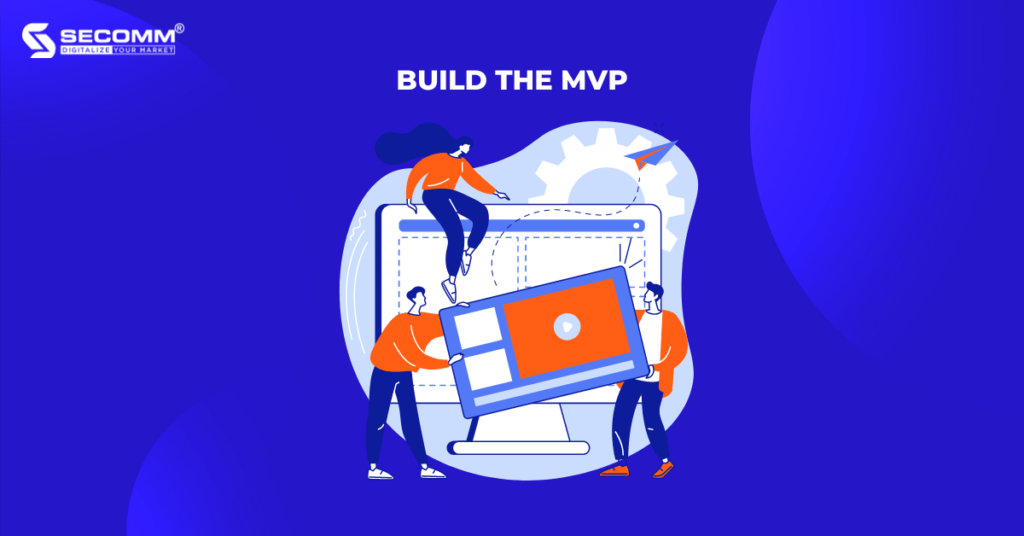
After building and releasing the MVP, businesses should collect feedback from users through various channels such as social media, surveys, or reviews on the App Store or Google Play to gather their opinions on the experience when using the eCommerce app. Moreover, businesses should carefully review the feedback and use it to make decisions about how to improve the app. In particular, they should prioritize the most important issues users are facing and resolve them quickly.
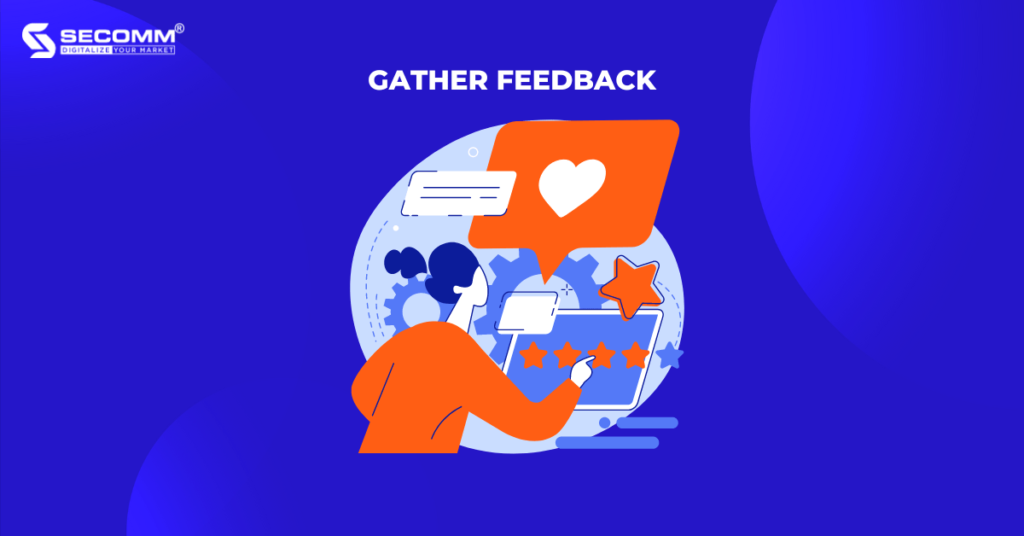
After gathering and reviewing user feedback, businesses can will refine the app and conduct a second round of testing to ensure the app performs well and the improvements have enhanced the user experience. Once the refining and second round of testing is done, businesses can release the product to the market and run marketing campaigns to reach target customers. However, the business needs to closely monitor the performance of the eCommerce app and regularly collect feedback from customers while continuously improving to meet the ever-changing demand of users and maintain a competitive advantage in the market.
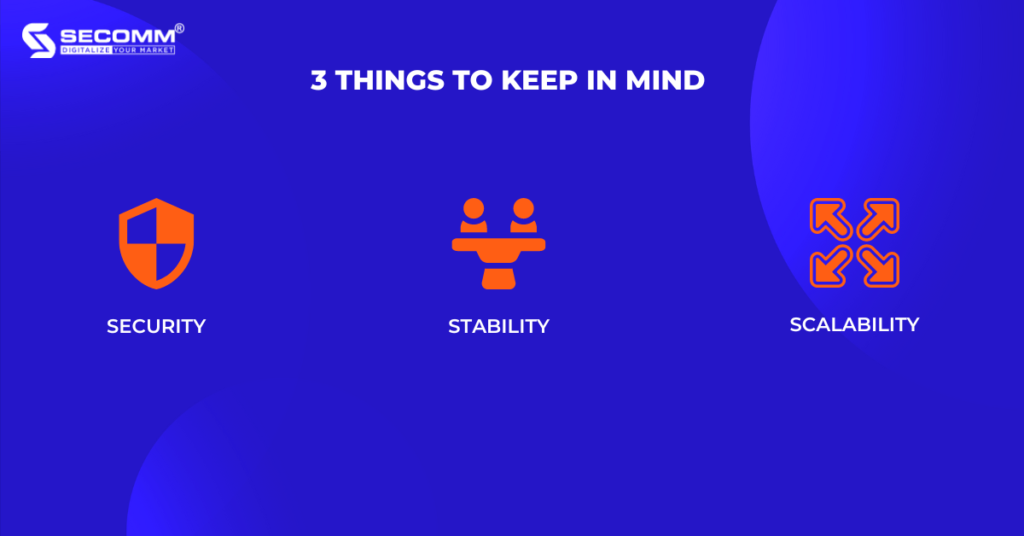
It is a top priority factor that businesses should put their minds to when building an eCommerce application. When users download, register an account, and start using the app, their private data such as login information, personal information, and payment information will be stored on the system. Therefore, businesses should comply with general regulations related to security issues and provide customer information as well as deploy secure payment gateways, and use SSL encryption or two-factor authentication to protect user data of the eCommerce app.
The stability and reliability of an eCommerce app are crucial for a business to provide an incredible user experience. Customers typically prefer apps that run smoothly without any bugs or errors. However, releasing a flawless eCommerce app without any bugs is unrealistic. Therefore, businesses need to conduct thorough testing to identify and fix any issues before launching, while also regularly maintaining and updating the app to improve its performance and prevent or correct any errors that may arise.
This is the ability of an eCommerce app to handle increasing traffic, user volume, and shopping transactions without affecting the performance or functionality of the app. When getting started, businesses should predict the app’s future growth and place to build an app that is easily scalable when necessary. Moreover, businesses need to plan for the addition of advanced features to meet expansion needs.
In summary, security, stability, and scalability are three factors to consider when building an eCommerce app. By focusing on these three factors, businesses can provide customers with a safe, reliable, and scalable app that corresponds to the development of the business.
Above is the general process of 8 steps for building an eCommerce app with some important notes during the implementation. With years of experience implementing eCommerce for businesses from many countries, SECOMM understands the difficulties businesses will face when implementing eCommerce apps.
Contact us today for a free consultation.

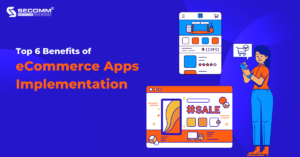
 27/04/2023
27/04/2023
 1,447
1,447
 2
2
 0
0
 1
1
According to data compiled by Forbes Advisor, global Mobile Commerce sales reached $415 billion in 2022 and are expected to reach $710 billion in 2025.
In fact, Mobile Commerce dominates the eCommerce industry, accounting for about 73%, and the use of eCommerce app is growing faster than any other type of app on the market, with an annual growth rate of 54%. This shows that eCommerce app contribute significantly to sales on mobile devices and implementing mobile app is considered the right path for every business in the mobile commerce era.
Increasing brand awareness is one of the benefits that eCommerce app bring to businesses. Since most customers spend hours on mobile devices (e.g smartphones), it’s easier for brands to connect with them through eCommerce app. However, to fully leverage the other capabilities of mobile app, brands need to provide a rich and high-quality app experience. As Statista has noted, about 32%-34% of app users will uninstall if the app is difficult to use or has too many unwanted ads.
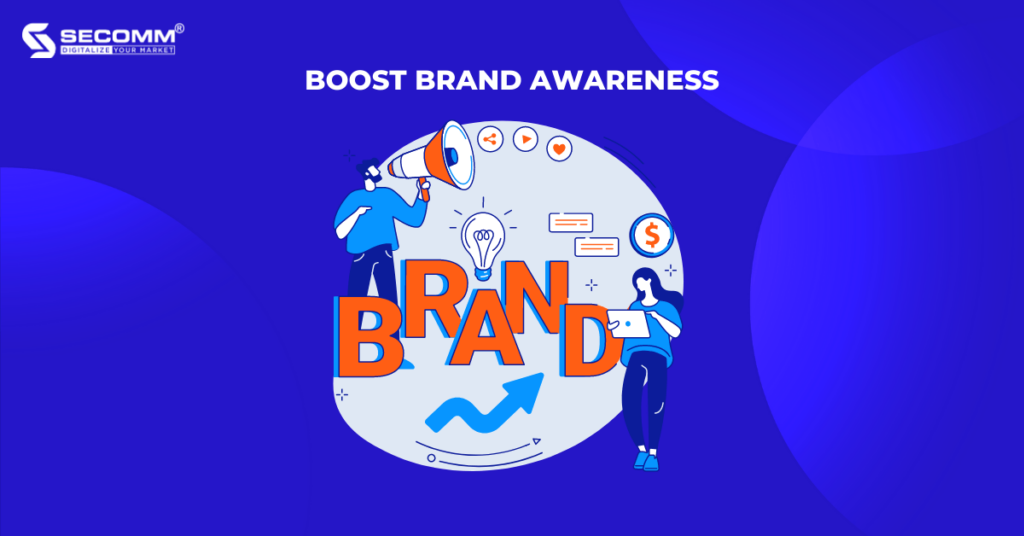
eCommerce websites help deliver personalized shopping experiences with algorithms and support tools but eCommerce apps enable businesses to offer personalized special incentives or promotional programs right in the app without having to access the websites via browsers on desktop or mobile. As a result, among various methods, business owners can combine push notifications, and instead of sending the same push notification to all app users, they can send personalized notifications based on user behavior.
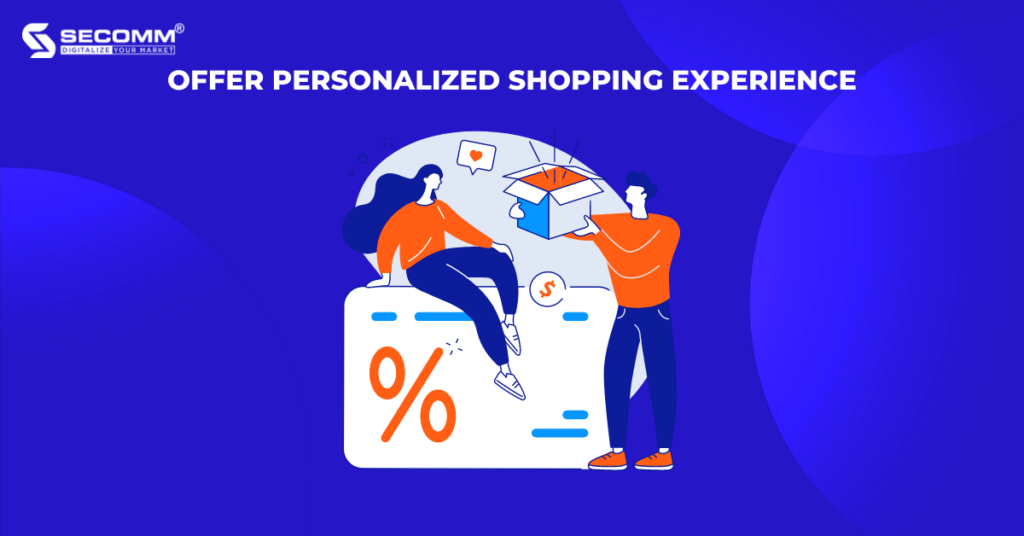
As mentioned, customers tend to love and prioritize shopping on eCommerce mobile app instead of eCommerce mobile web. Therefore, the conversion rate of the mobile app will be higher than that of the mobile web. The graph below indicates the different conversion rates between the mobile app and mobile web.
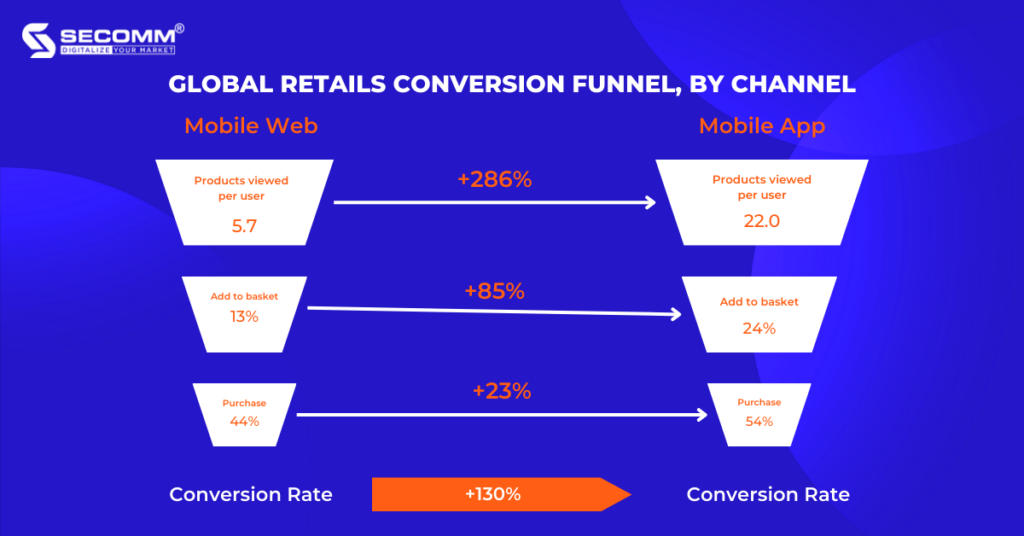
Mobile app users view products more than 286% and add items to the cart at a higher rate of 85% compared to mobile web users. Moreover, the graph shows that the conversion rate of mobile app is over 130% higher than that of the mobile web. Naturally, when the conversion rate increases, it will lead to an increase in sales revenue and profits.
Building an eCommerce app not only boosts brand awareness, enhances customer experience, and improves conversion rate but also increases the average order value (AOV). This is the average dollar amount customers spend each time an order is placed on the app.
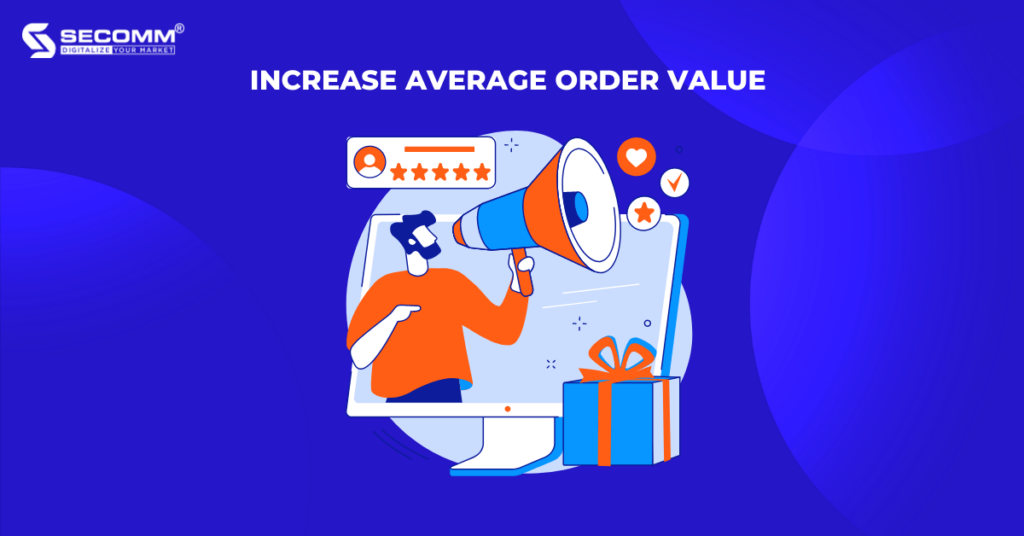
Customers prefer shopping on eCommerce app because it’s convenient for them to browse through products and make purchases. Therefore, they have more opportunities to browse through a wider range of products. This enables businesses to apply cross-selling and upselling techniques, suggesting complementary products to encourage customers to make additional purchases. As a result, the increased AOV drives up revenue and profits.
Some data on cart abandonment has been reported by Ruby Garage:
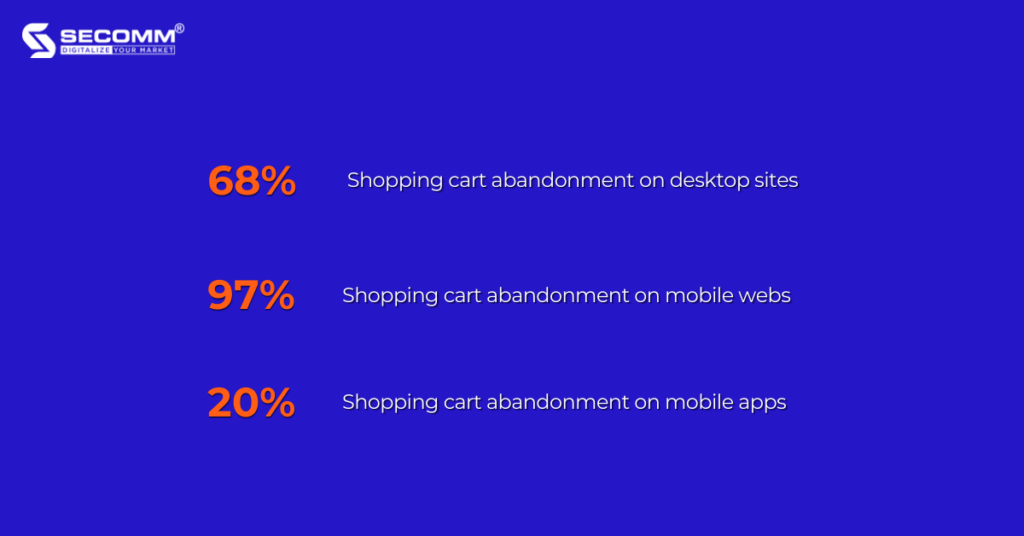
One of the top reasons for that is the long and confusing checkout process. Mobile shopping app will help businesses reduce cart abandonment with the optimized checkout process. When customers buy products, relevant information will be stored in the app’s system, so they don’t have to re-enter their information but complete the purchase with a few taps. In addition, businesses can also shorten the checkout process to improve cart abandonment rates by integrating various payment methods into the shopping app.
For every eCommerce business, increasing sales revenue is a valuable achievement. However, it’s crucial to point out how many regular customers contribute to this success. According to the Harvard Business Review, the cost of acquiring a new customer is more expensive than retaining and satisfying an existing one, ranging from 5-25 times higher. But, if the customer retention rate increases by just 5%, profits can increase from 5% to 95%. As a result, businesses need to put their minds to existing customers.
There is a 50% chance that customers will return to a shopping app within 30 days of their last purchase. In other words, businesses can increase customer retention and loyalty with their mobile app in several ways, including
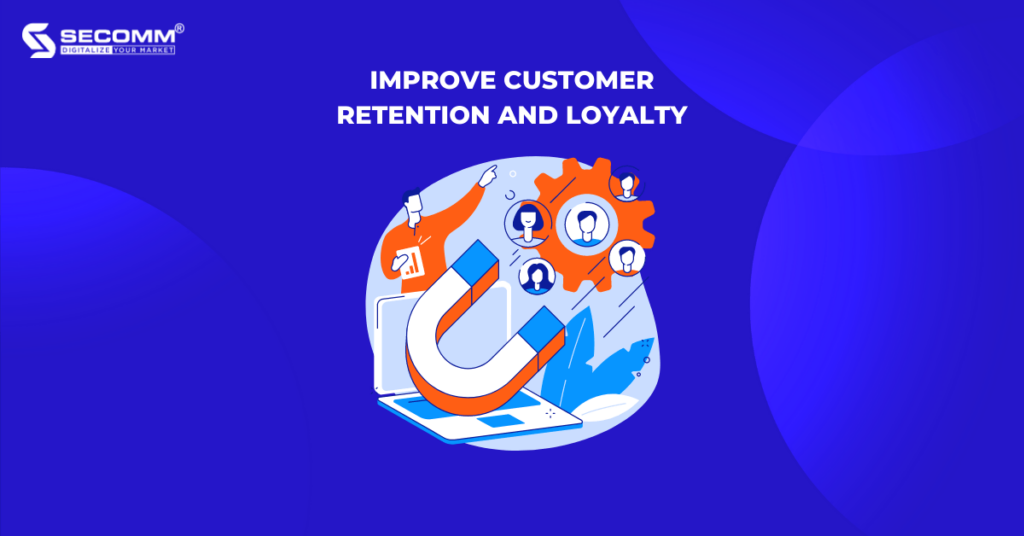
With the incredible benefits of mobile app, businesses are increasingly motivated to quickly build their app to enrich the customer shopping experience while capturing the Mobile Commerce trend.
With years of experience in implementing eCommerce for many businesses in many countries, SECOMM understands the difficulties and obstacles in developing your mobile shopping app.
Contact us today for free advice.

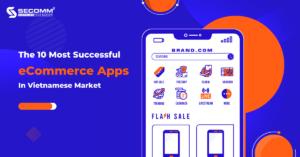
 26/04/2023
26/04/2023
 2,849
2,849
 2
2
 0
0
 1
1
The significant increase in the number of smartphone users has contributed to the rise of Mobile Commerce trends worldwide, including in Vietnam. It’s time for retailers to focus on supporting their customers in searching and shopping through mobile devices, in addition to eCommerce websites.
Many businesses across various sectors, from shopping, healthcare to food, have performed very well in this strategy by becoming pioneers in embracing Mobile Commerce trends in Vietnam.
The SHEIN app is known as one of the most successful eCommerce apps in the world today, and now it has become the most downloaded mobile app in the shopping category in 2022 with 229 million downloads and installs from both Google Play and the App Store.
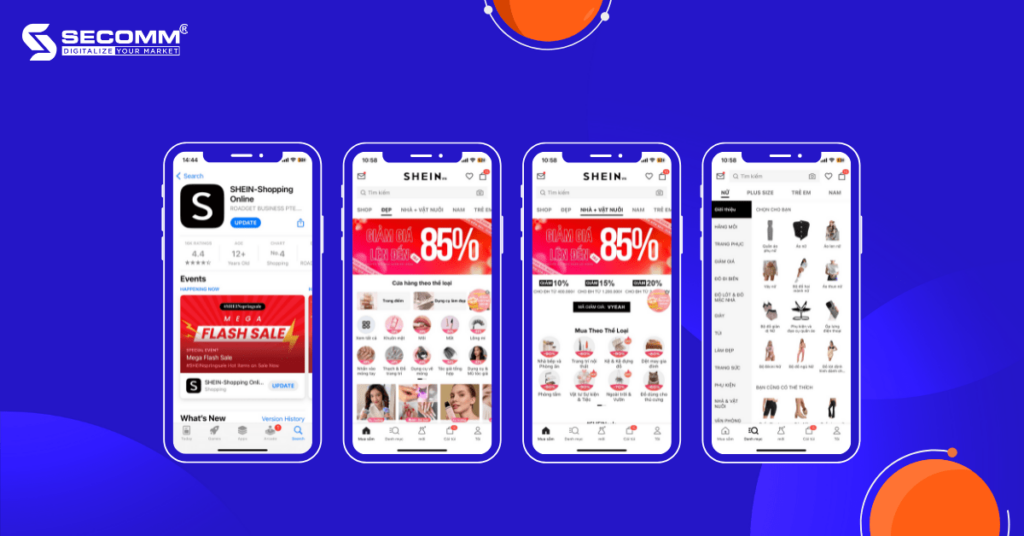
In the Vietnamese market, SHEIN is also highly rated by users for their shopping experience on the app. In the latest update, SHEIN added a discount program for some fashion items of up to 70%, as well as fixing some bugs and improving performance to provide users with a better experience.
Download the SHEIN app: Google Play | App Store
When entering the Vietnamese market in 2019, Uniqlo quickly captured and responded to the local consumers’ fashion shopping trends, which made the brand very popular. The Uniqlo VN app stands out with many necessary functions for a consistent shopping experience between mobile devices and other channels. In order to attract more users, Uniqlo will offer a 150,000 VND discount voucher for anyone who downloads the app and signs up as a new member.
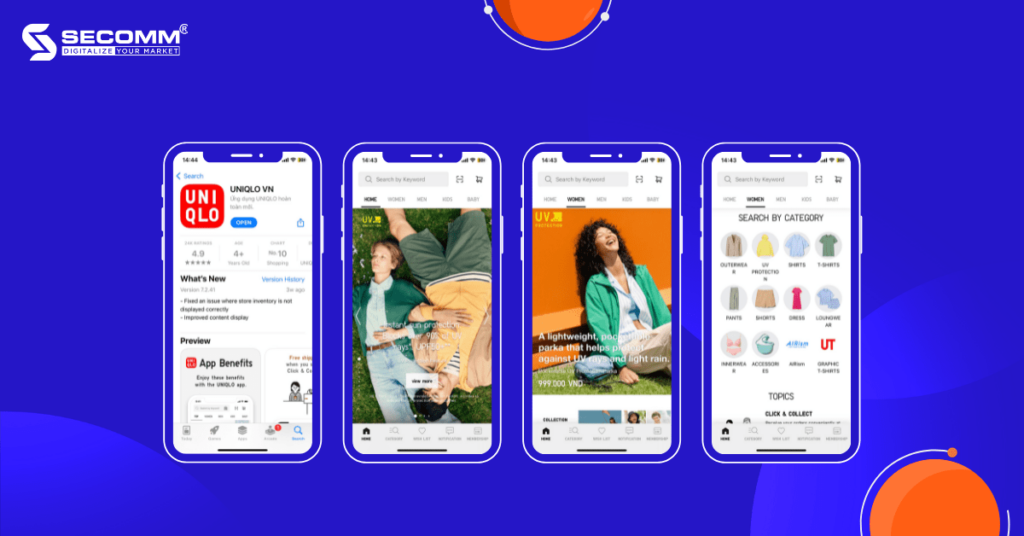
Although the Uniqlo VN app is highly rated for user experience, the brand still keeps updating and improving its features. In the latest update, Uniqlo has improved the quality of product image display and adjusted the accurate display of the number of products available in-store.
Download the Uniqlo VN app: Google Play | App Store
Hasaki not only has nationwide brick-and-mortar stores and an eCommerce website but also develops a mobile app to offer its customers enriched shopping experiences and attractive incentives.
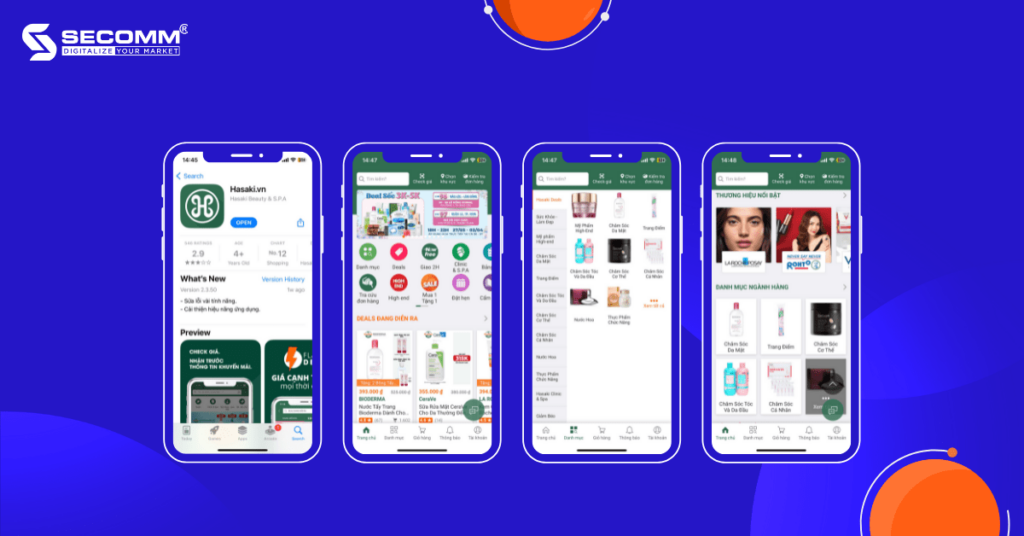
By using the Hasaki app, customers can conveniently search and purchase products anytime, anywhere, track their order status, and make appointments for spa and clinic services at the store. One thing that makes Hasaki special is the free delivery within 2 hours for all customers, whether shopping at the store, eCommerce website, or mobile app. Despite getting much critical feedback for usage quality, Hasaki is still very receptive, fixing bugs and optimizing performance in the recent updates.
Download the Hasaki app: Google Play | App Store
After rebranding, the Big C supermarket chain has been renamed Go!. As a result, the mobile app of this business is now called Go! & Big C. Customers who shop on the app will enjoy many benefits, including:
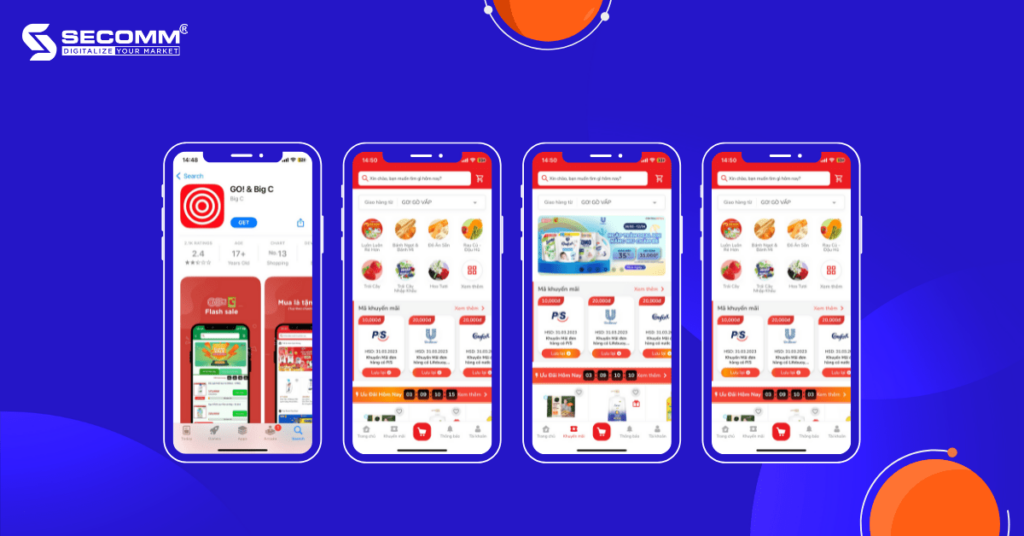
The Go! & Big C app is regularly updated to improve the online shopping experience for customers. In the most recent update, the developer has improved the payment function, fixed bugs, optimized performance, and image display capabilities.
Download the Go! & Big C: Google Play | App Store
Con Cung is one of the first childcare brands to develop its mobile app to provide customers with a consistent shopping experience across different channels, including physical stores, mobile apps, and eCommerce websites.
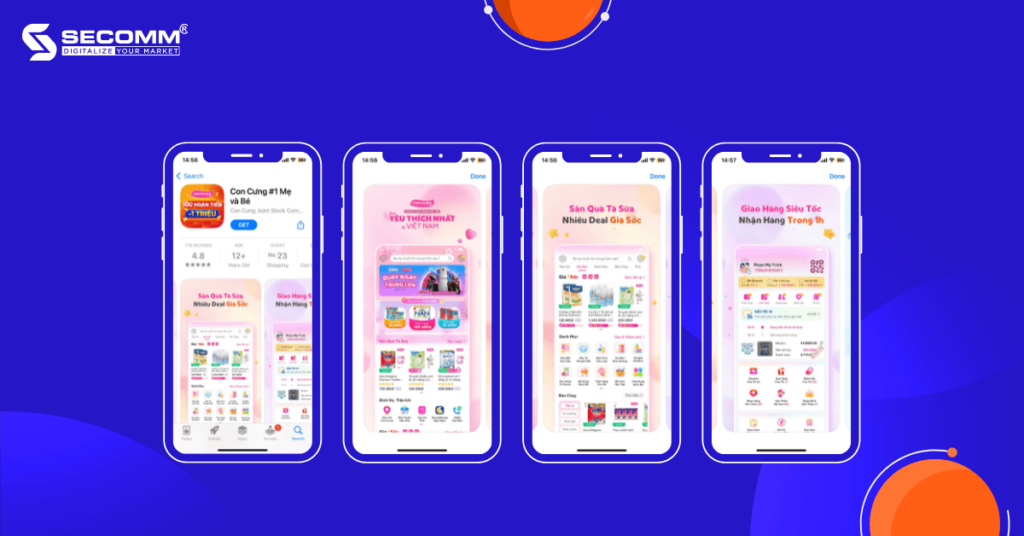
The Con Cung app has received very positive reviews from users on both Google Play and App Store for user experience, product quality, and promotional programs. However, the brand still maintains the practice of testing and improving certain features such as displaying detailed driver’s information when customers place orders for the 1-hour delivery service and fixing bugs related to payment via eWallet.
Download the Con Cung app: Google Play | App Store
Dien May Xanh is a big player in the Vietnamese home appliance industry that has successfully captured the market trend and quickly developed a mobile app to reach the huge smartphone user base in Vietnam – approximately 69 million users.
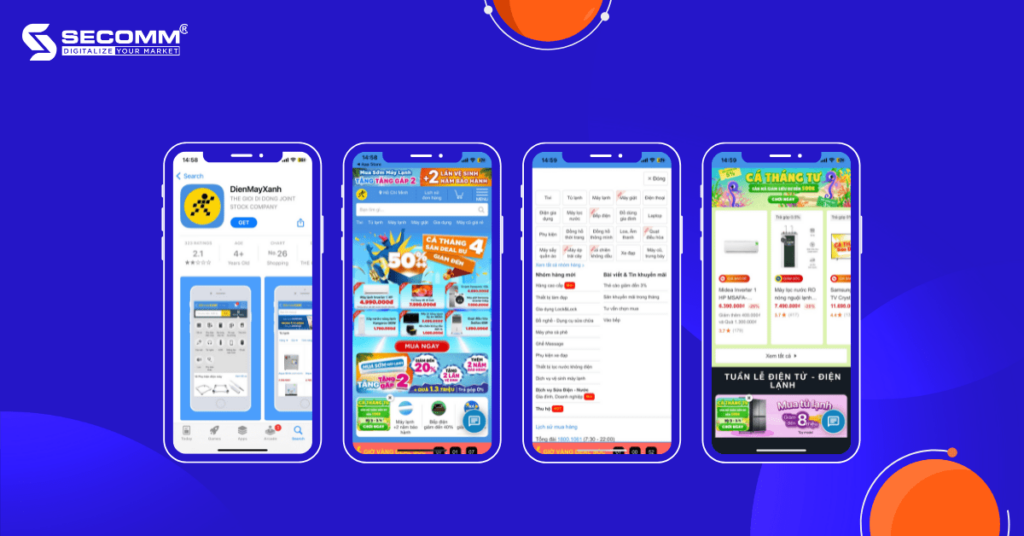
In addition to massive promotional programs on special occasions, Dien May Xanh also provides customers with discounted payment programs using various methods such as Buy Now Pay Later, QR Code, etc. All of these are carried out quickly and easily both on the website and the mobile app.
Download the app: Google Play | App Store
The Vietnamese mobile commerce market has witnessed the entrance of another famous cosmetics retail brand, LixiBox. Similar to Hasaki, LixiBox also continuously updates its app to enhance the shopping experience of customers.
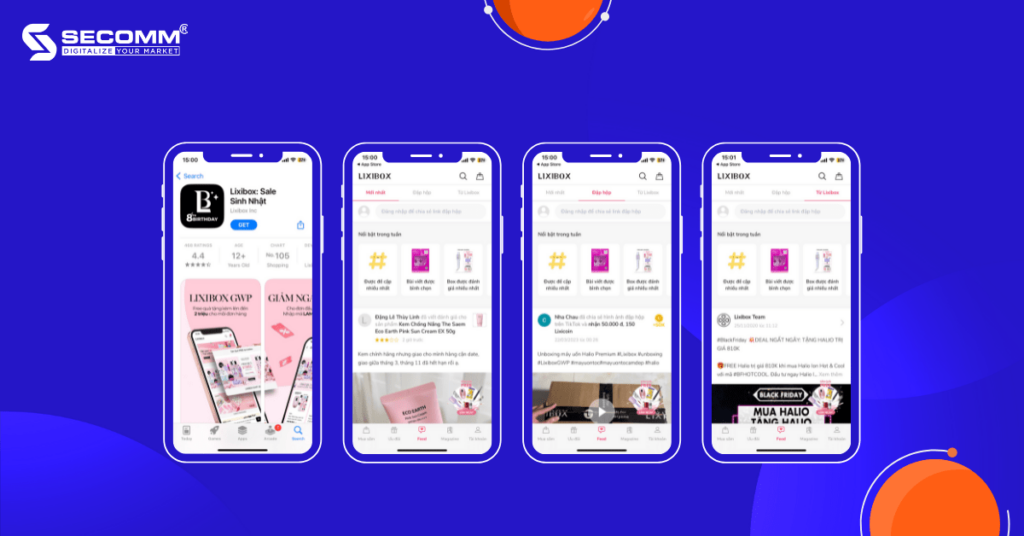
Moreover, the brand offers many special incentives to attract users such as a 20% discount for the first order placed on the app, a referral program where customers can receive 500,000 VND, a magazine section where users can update the latest beauty trends right on the app, and a LixiBox Feed section where customers can share their experiences on products and services.
Download the LixiBox app: Google Play | App Store
When the Long Chau mobile app was launched during the Covid epidemic, it quickly received support from customers everywhere because they could buy medicine and healthcare products online and have them delivered to their door, while also earning reward points for their next purchase. In addition, the app has a call and message feature that allows users to contact pharmacists online for free in-depth advice and support. Furthermore, Long Chau is the first pharmacy to pioneer the Buy Now Pay Later service with 0% interest, helping patients and customers find a new convenient way to make purchases.
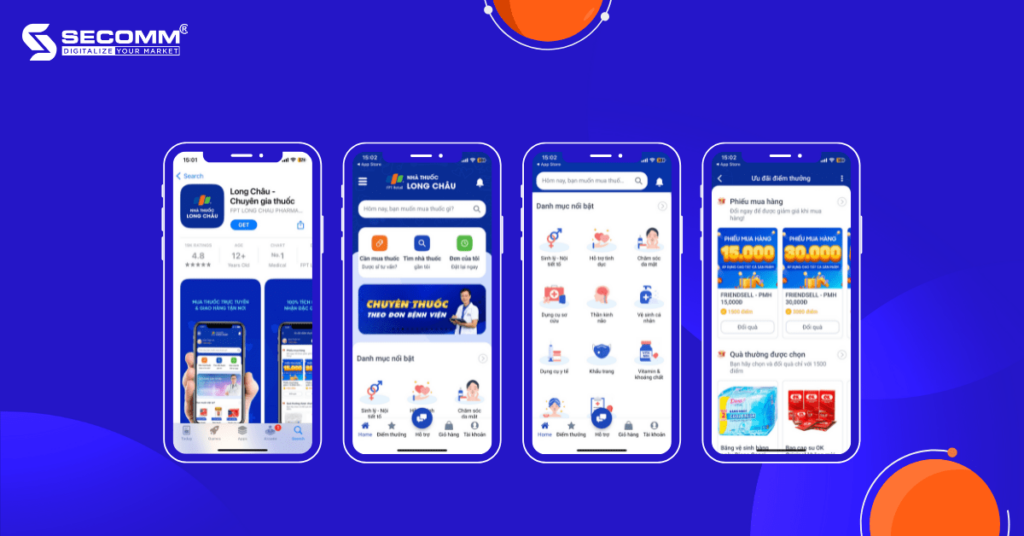
User experience is a particularly important factor that Long Chau focuses on, and the app regularly releases updates. These updates include optimizing the login function, improving the payment function, integrating payment via eWallet, synchronizing order status on the website and app, suggesting reordering, and more.
Download the Long Chau app: Google Play | App Store
Pharmacity is a mobile app developed by the convenient pharmacy chain – Pharmacity in 2018. Similar to Long Chau, the Pharmacity app was created to provide customers and patients with a convenient and fast shopping experience, along with online consultation services from a team of highly specialized pharmacists.
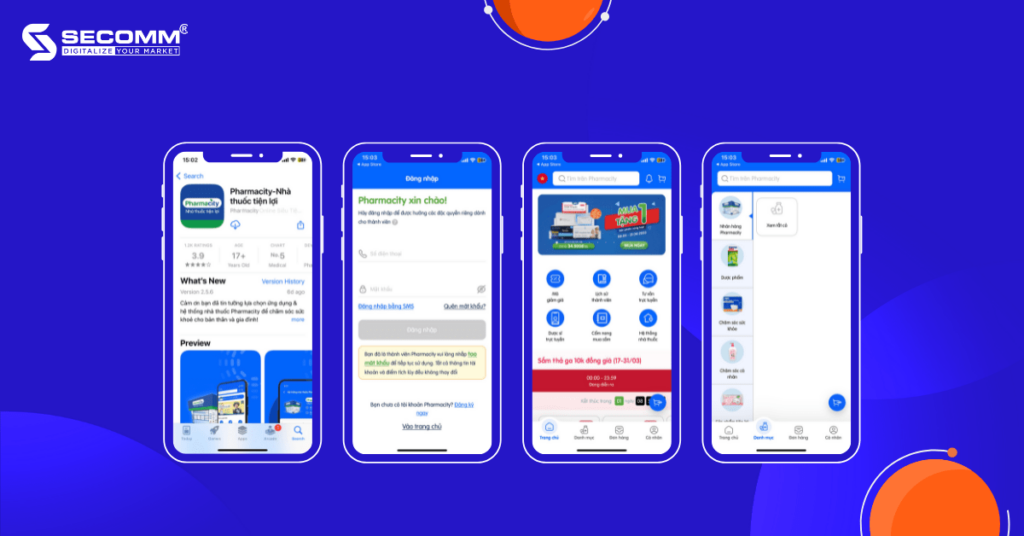
In its latest update, Pharmacity has improved and added some features, including a gift program for first-time users who download the app and sign up as members.
Download the Pharmacity app: Google Play | App Store
In 2021, the famous beverage brand The Coffee House officially launched its mobile app with the same name, aimed at providing customers with the experience of ordering drinks for delivery or picking up at the store, along with many reward point programs for attractive incentives.
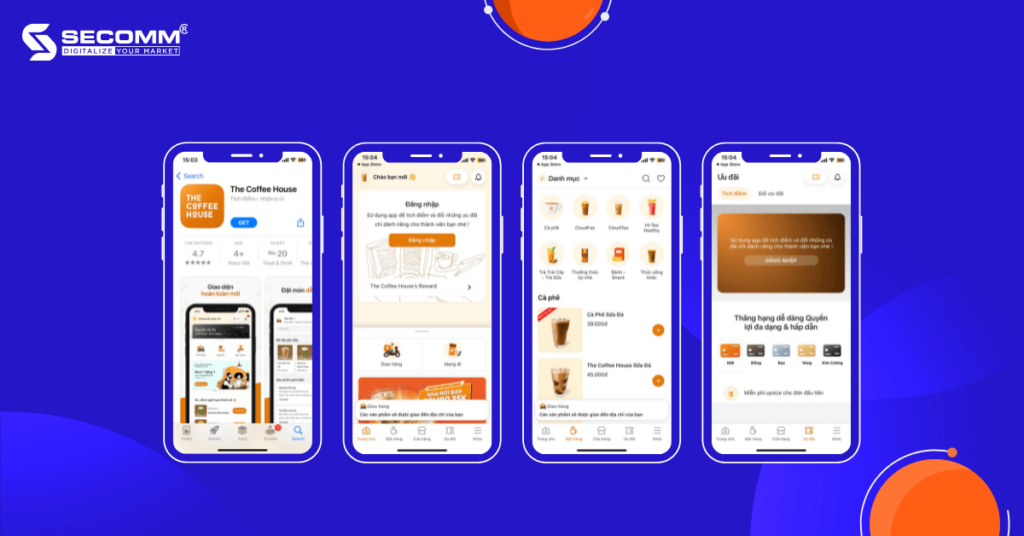
After two years of development, the new version of The Coffee House app features a completely new interface and many special features designed to enhance the customer experience both on the app and at physical stores.
Download the app: Google Play | App Store
Mobile eCommerce apps are one of the rising trends in mobile commerce. As a result, developing mobile shopping apps is the first smart move to achieve sustainable growth in the booming era of mobile commerce.
Contact SECOMM now for advice on how to implement and develop the best strategies to dominate the Mobile Commerce market.

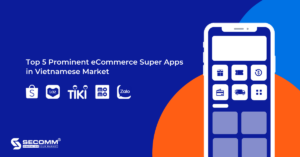
 14/11/2022
14/11/2022
 4,234
4,234
 2
2
 0
0
 1
1
According to the latest of Ministry of Industry and Trade of the Socialist Republic of Vietnam in 2022, the eCommerce industry’s revenue is estimated at 13.7 billion USD, increase 16% compared to 2020 and accounting for 6.5% of the total retail revenue of Vietnam. Due to e-Commerce SEA, Vietnam’s eCommerce will grow by an average of 25% per year from 2022 – 2025, possibly reaching 35 billion USD in 2025.
The impact of the Covid-19 epidemic and social distancing orders, as well as changes in consumer behaviour, are driving the growth of this industry.
Thanks to super apps, such as Shopee, Lazada, Tiki, MoMo, and Zalo, it’s easier to deploy mini apps, creating a premise for inexperienced brands to build eCommerce systems to enter this billion-dollar market.
Shopee is the most popular eCommerce market in Southeast Asia and Taiwan. Shopee was founded in 2015 to provide people with an easy, safe, and quick online buying experience.
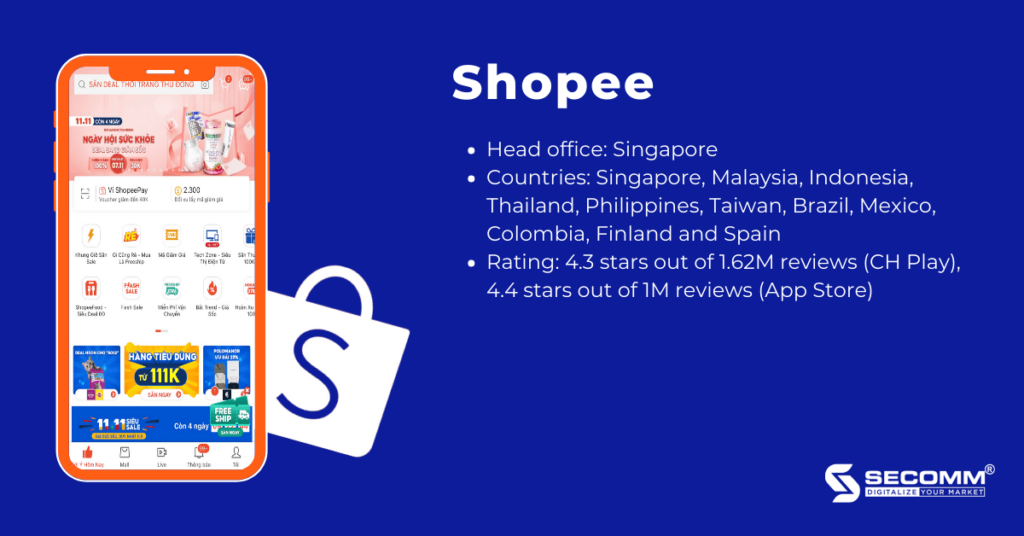
Shopee is gradually becoming an eCommerce super app, not only offering online shopping services but also owning various mini-apps such as Shopee Food, Shopee Mart, Shopee Wallet, insurance services from banks, booking flights, hotels and so on.
Lazada, founded in 2012, is one of Southeast Asia’s biggest eCommerce marketplaces. This brand has always been a pioneer in fostering regional development via commerce and technology, intending to service 300 million consumers across Southeast Asia by 2030.
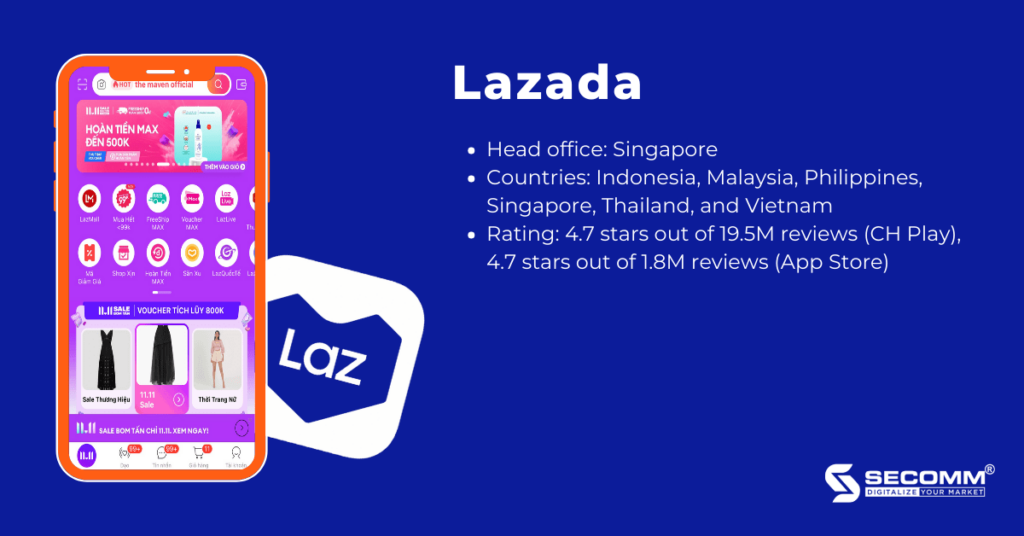
Like Shopee, Lazada has many mini apps and utilities for its own e-commerce business strategies, such as eM wallet, card and eVoucher recharge, online shopping, etc.
Tiki is one of Vietnam’s most successful eCommerce marketplaces. Tiki was founded in March 2010 as an online English book-selling site. Since then, Tiki has evolved into an eCommerce super app, focusing on delivering hundreds of thousands of goods from a variety of product categories.
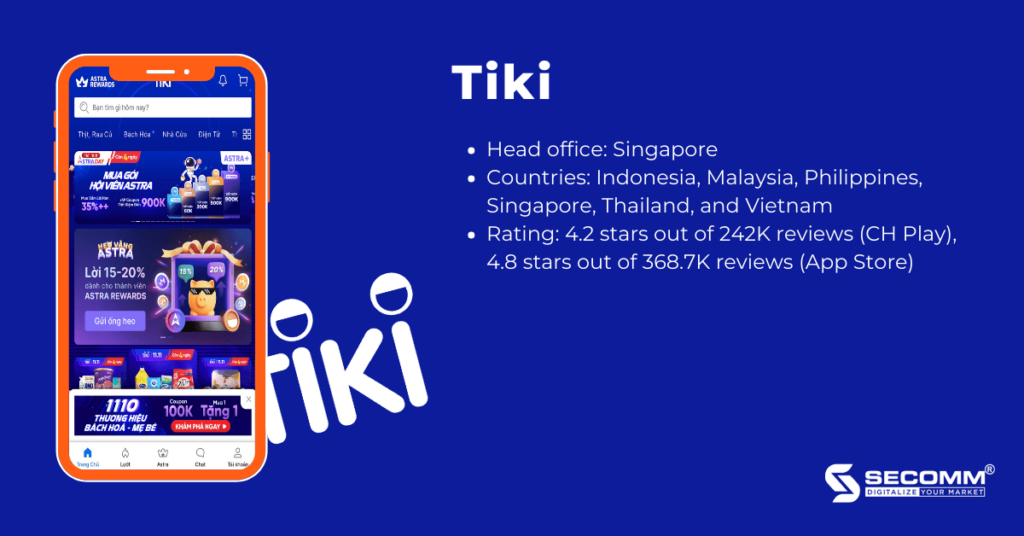
Tiki has been a pioneering marketplace in applying digital currency to business concepts, as proven by the launch of Astra, to boost up eCommerce. At the same time, Tiki refined its ecosystem by creating a series of extensions with mini apps from brands in various industries, including finance, gaming, food, shopping, health, insurance, entertainment, lifestyle, tourism, and community.
MoMo is an e-wallet created by Online Mobile Services Joint Stock Company (M Service) that allows users to make mobile payments and transactions. Through partnerships with more than 90% of Vietnam’s banks and 10,000 local businesses, the company dominates more than 80% of the market for digital payments. As of 2022, MoMo e-wallet has more than 31 million users.
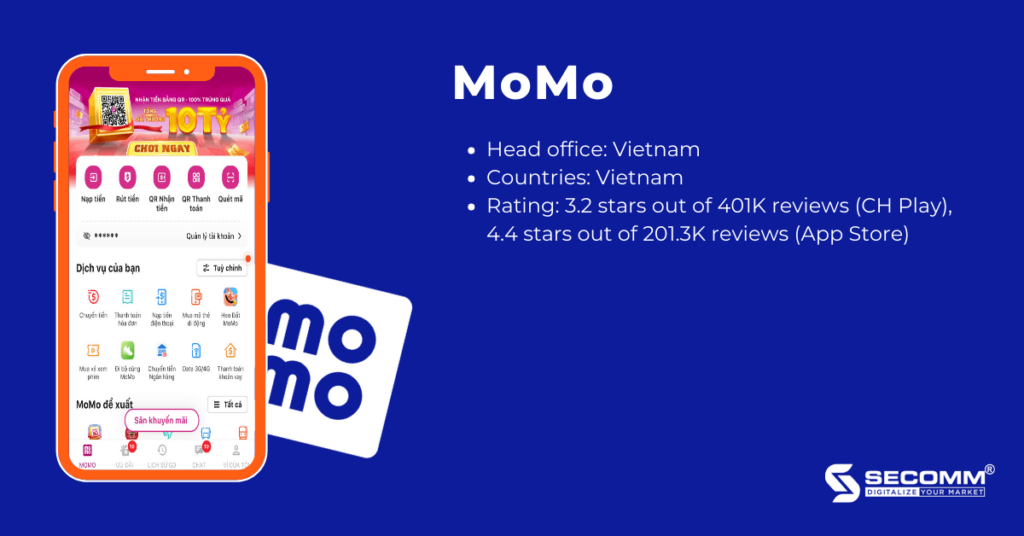
Since 2022, MoMo has developed a mini app technology, formally identifying itself as a super-payment app, helping small and medium companies to “climb on the shoulders of giants,” and construct an ecosystem for MoMo. In particular, utilities from businesses such as online shopping, restaurants, transportation services, tourism and hotels, investing and banking, medical services and so on.
Zalo was formally launched in December 2012, with the essence of a cross-platform instant messaging software built by the Vietnamese startup VNG. Zalo is a blend of Zing (a VNG-created social network) and alo (a phrase used to pick up a phone in Vietnam). Zalo has progressed to become a multi-functional, multi-platform social networking super app.
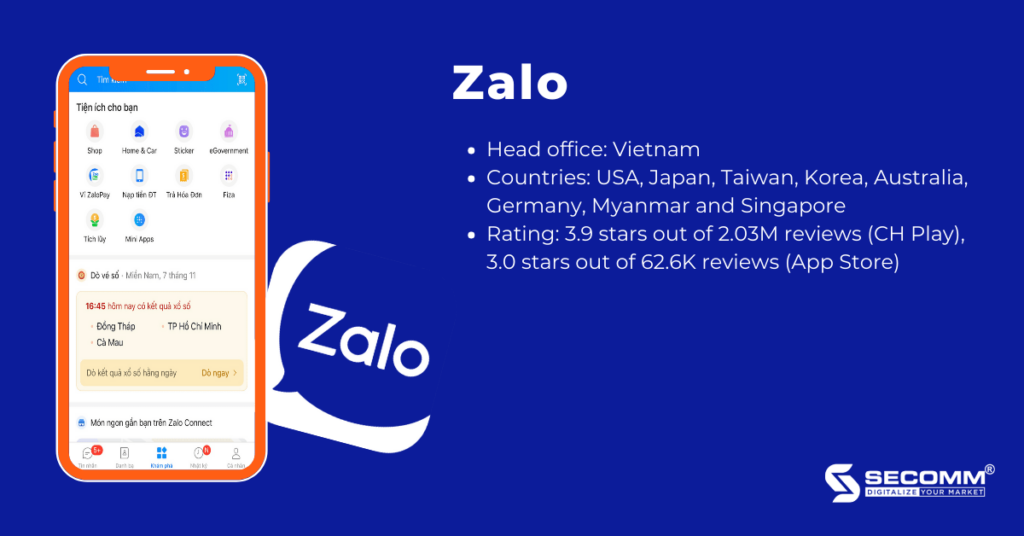
Like MoMo, Zalo created a new brand named Zalo Mini App to help other brands reach 65 million regular users on Zalo, and make diversity for this messaging platform. Since then, Zalo has also supported other services, primarily through partnerships with brands in finance, eCommerce, entertainment, games, restaurants and hotels.
As can be seen, the future of Vietnam’s eCommerce industry will continue to rely on these “giants,” thus businesses should incorporate eCommerce super apps into their business models as soon as possible to reap the full advantages of these applications. However, companies should not rely on these apps for long periods of time since it will result in a loss of customer data, income from commission per order, and so on.
With more than 8 years of experience in consulting and deploying eCommerce systems, SECOMM understands the challenges businesses face in implementing eCommerce business effectively.
So we provide a free eCommerce consultation to help businesses catch on to this industry!
